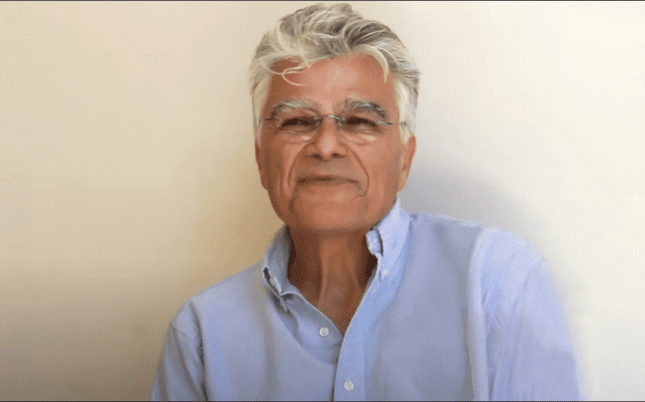Many of us had that special teacher, the one who went beyond the standard protocol and treated us like more than a student. Mine was Miss Corrigan, my second-grade teacher, who fed my will to achieve through her gentle encouragement and warm smile. I wanted to do well, but when my will waned, I still wanted to do well for her. As I struggled through elementary penmanship and basic multiplication, I knew I didn’t want to let her down. Was this the essential fuel for whatever academic achievement I’ve attained in life?
Pepperdine professor and psychotherapist Lou Cozolino, author of The Neuroscience of Human Relationships and The Neuroscience of Psychotherapy, would say yes. He believes that the key to improving our schools is learning how to incorporate an understanding of attachment theory and social neuroscience into our educational system. Throughout his career, he’s devoted himself to bridging the world of academic research with the realm of practical applications.
Recently, he’s turned his attention to the educational system with his book The Social Neuroscience of Education and the forthcoming Attachment-Based Teaching. In a world in which test scores rule and curricula are king, he proposes the radical idea that relationships are actually the key to improved academic performance. In this conversation, he shared his thoughts about the role of social neuroscience in both the classroom and the consultation room.
—–
RH: You’re someone who’s interested in applying the ideas that come out of attachment theory and neuroscience to arenas outside of psychotherapy, especially our troubled educational system. What are you discovering?
Cozolino: Currently, there’s a cottage industry of “brain-based learning,” most of which is just a waste of time because it’s all about narrow principles of cognitive psychology—like “How can teachers best structure classroom content?” and “What are the best techniques for helping students remember things?”—that don’t look at the interpersonal learning environment of the classroom. As a result, most of the research about education isn’t very useful because it leaves out some of the most important variables. We need to do more to apply what we know about interpersonal neuroscience and the impact of attachment on learning if we’re going to make the systematic changes in our educational system that we need.
RH: So what’s wrong systemically?
Cozolino: Historically, most people learned in a tribal context from others they were related to about things that were important and had survival value. The current education system has abandoned that model and hasn’t been working well, especially for students labeled uneducable. These students are the ones the system gives up on. In New York City, where I grew up, it usually meant black kids, and in Los Angeles, it’s often Mexican kids. There’s a feeling that these kids are so socially disadvantaged that they just don’t have what it takes to learn.
The starting point in my research was to find teachers, or anyone, who could take these kids and get through to them. I began by finding a group of a dozen teachers who somehow had developed a track record of taking kids that everyone else had given up on and turning them around. I was interested in finding out about their methods and exactly how they created a learning environment in their classrooms. It slowly dawned on me that there was a common element in all these cases: they’d all found a way to reestablish the social–emotional context of the tribe.
By that I mean they’d discovered how to establish an environment for connection, belongingness, and a group identity. After all, the social brain evolved in tribes, and what these gifted teachers were doing was leveraging the kids’ basic social instincts to stimulate neuroplastic processes in students who otherwise weren’t able to learn in the traditional educational system. I was especially interested in the connection between the attachment circuitry in the brain and activating the neuroplasticity necessary for learning, especially with kids who were otherwise turned off to learning.
RH: What might a tribal classroom look like?
Cozolino: A tribal classroom simulates an environment of collaboration, mutual support, and secure attachment, which turns the brain back on. What I observed in those classrooms was that they were full of students who ranged from gifted to autistic, and that the kids at one end of the skill spectrum were able to learn from those at the other end. What was important was that the gifted kids needed to feel sufficiently challenged and the lower-functioning students needed to feel connected enough so that they were part of the group as well. It’s important for everyone to feel as if they contribute and belong.
That doesn’t fit today’s assembly-line educational approach. For example, in the traditional classroom, students sit in rows and face the teacher, who represents the repository of wisdom that everyone has to drink in. Alternatively, tribes sit in circles, and each person brings something to the table. In tribal learning, education isn’t a separate process: it’s part of life. The goal is to make the classroom more like everyday life and teach the information in the context of activity. When you can restructure the assembly-line classroom into a natural, family-like environment, you’re likelier to stimulate the brain in ways that enhance learning.
RH: I had a crush on my second-grade teacher. Could that have been the key to my decent academic career?
Cozolino: Absolutely! So you already know the magic. Attachment activates learning, and the more kids have secure attachment, the more attention and learning resources they bring to school. The more you move toward the ideal version of a student, the less they need their classroom to turn their brains on. Of course, you can still get a lot of miserable kids who sit around and smoke dope all day because they’ve been turned off by the whole system that’s based on test performance. And when the teacher’s job is based on student test performance, the whole thing goes sideways. It’s like guided inattention.
RH: Guided inattention?
Cozolino: That’s when people are trained to look at one thing and they miss everything else. Do you remember that movie My Dinner with Andre? Andre’s father is dying in the hospital and has a broken arm, and the doctor comes in and checks the arm and says, “You’re gonna be just fine.” He’s reassuring him, but he’s not addressing the fact that the man is dying of cancer. With education today, it’s the same type of thing. You’re saying, “This school must be getting better. The kids are getting better test scores.” But that misses the essential point—that more and more students are feeling disfranchised. And we don’t really know what the metric of test scores is worth.
RH: So what are the common principles that apply in both the educational system and psychotherapy?
Cozolino: Psychotherapy is essentially about creating an optimal educational environment, only with fewer students. The basic principles are the same. You have to develop a connection, you have to reduce stress, and you have to stimulate neuroplasticity. That’s basically what our therapeutic techniques and methods are all about. They depend on underlying neuroplastic processes for their effectiveness. Although we don’t usually talk in terms of neural changes, psychotherapy has always been guided by the invisible hand of the principles of creating new learning. It’s the same in the classroom.
RH: How can therapists use neuroscience more actively to help their clients?
Cozolino: The first step is to understand the emotional and physical conditions necessary for plasticity to take place and to focus on creating them as part of the therapeutic relationship. These conditions comprise secure attachments, moderate states of arousal, a balance of emotion and cognition, and the cocreation of new and positive self-narratives. Therapists need to understand how the brain functions to know how to change its function. They need a blueprint that isn’t a theoretical metaphor, but that’s grounded in evolution and neurobiological functioning so they’ve got a much higher probability of correct diagnosis and intervention. It’s not an evidence-based treatment: it’s a reality-based treatment.
Ryan Howes
Ryan Howes, Ph.D., ABPP is a Pasadena, California-based psychologist, musician, and author of the “Mental Health Journal for Men.” Learn more at ryanhowes.net.













